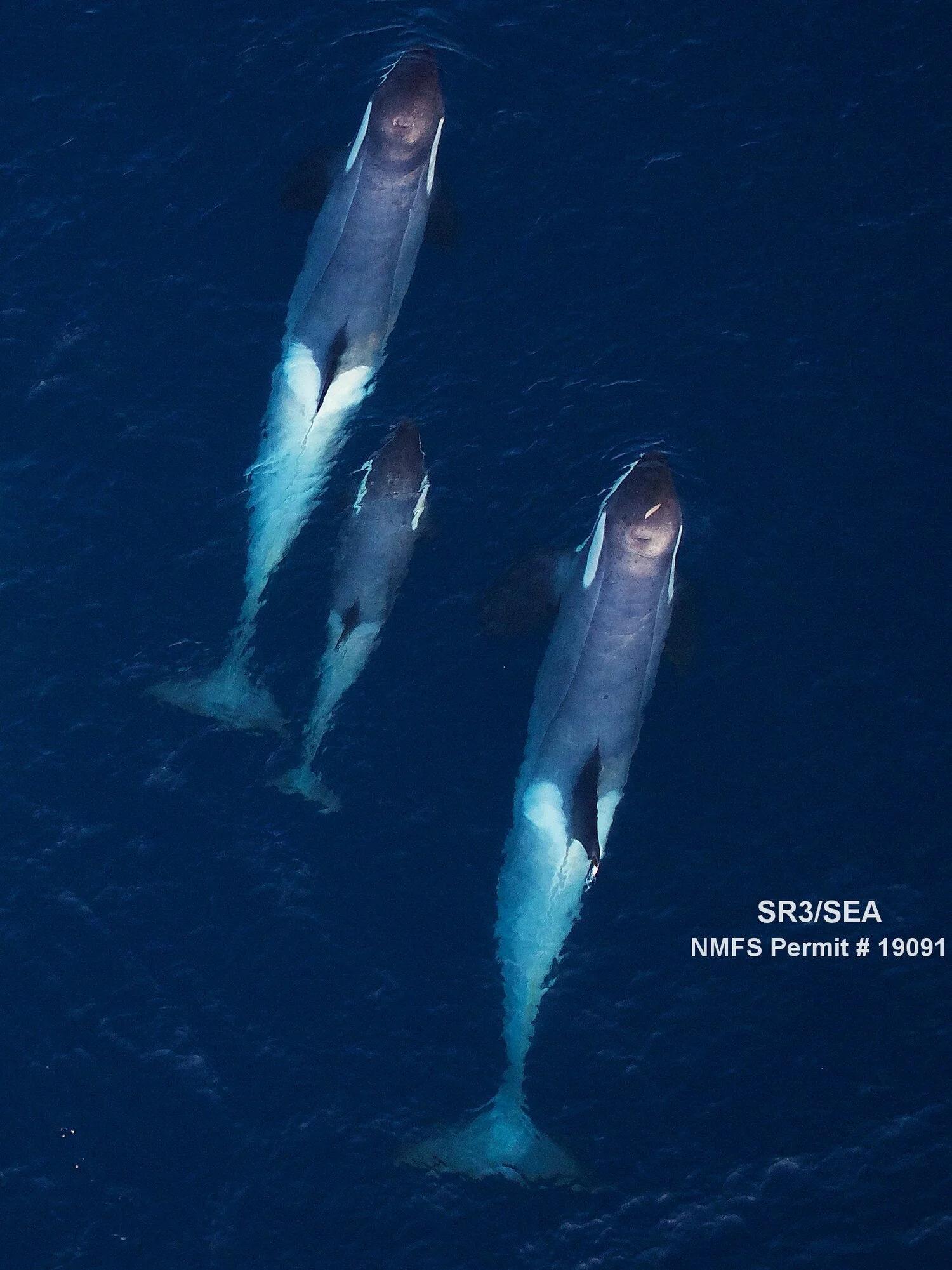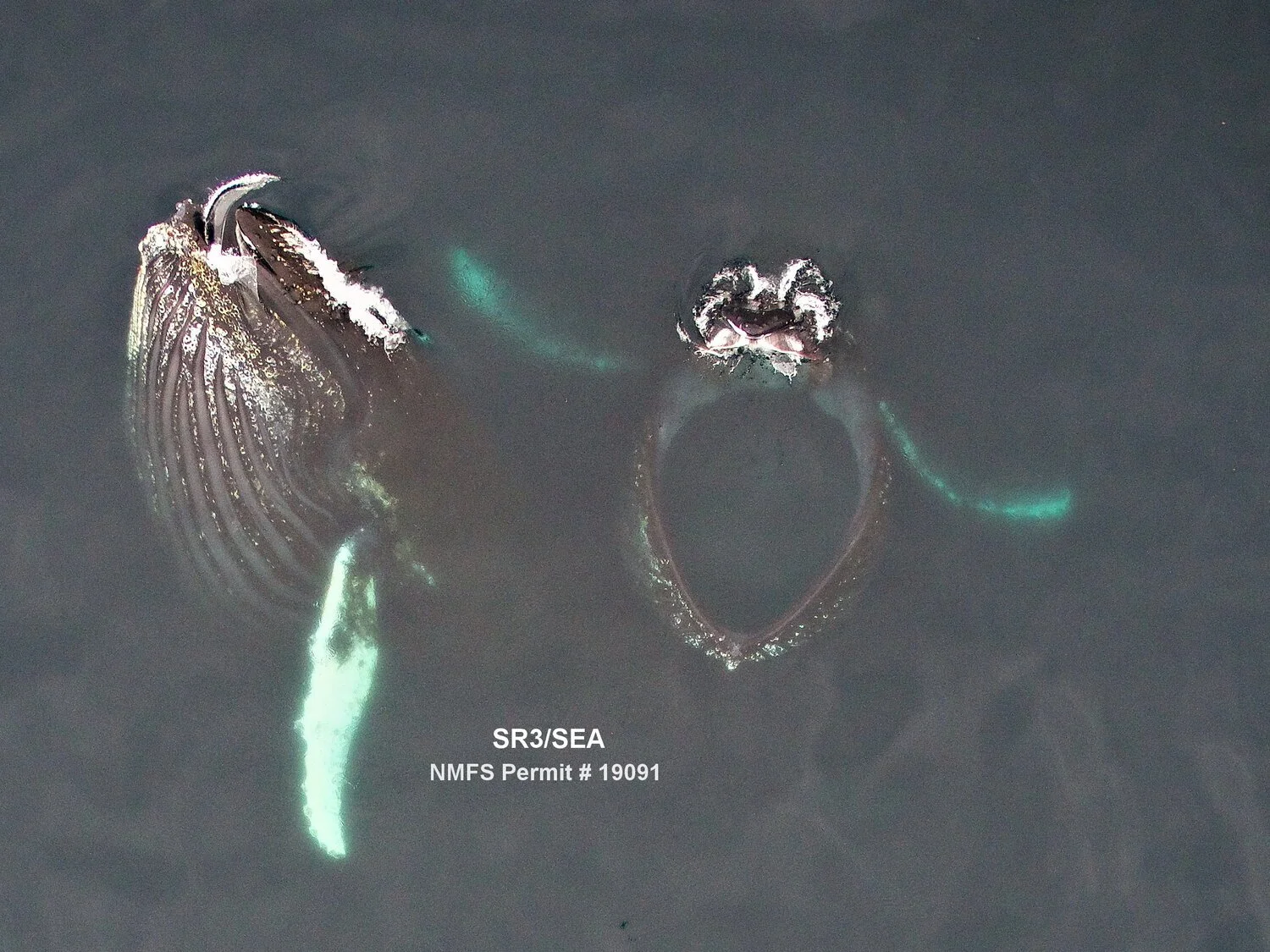The Antarctic Field Season is Off to a Great Start!
Dr. Holly Fearnbach, SR3’s Marine Mammal Research Director, and her colleagues Dr. John Durban (Southall Environmental Associates) and Jessica Farrer (SR3) just finished a successful first trip of the year to Antarctica on board Lindblad Expedition’s National Geographic Explorer. The team is assessing the health of top predators (killer whales) and top consumers (humpback and minke whales) around the Antarctic Peninsula to understand how these populations are impacted by the rapid warming of this marine ecosystem. Photo-identification images are being collected to monitor the population trends of three ecotypes of Antarctic killer whales (Types A, B1 and B2) and a small hexacopter drone is being flown to collect aerial images of killer, humpback and minke whales to measure growth and assess body condition to infer nutritional status. The hexacopter is also being flown through exhaled “blow” samples from humpback and minke whales to identify respiratory pathogens linking respiratory health and body condition. Similarly, small skin and blubber samples are being collected to describe the relationship between body condition and blubber hormones. The team has two more trips to go over the next month to go, but they have already collected photo-identification images of ~45 Type B2 killer whales and aerial images of ~ 12 Type B2 killer whales, 14 humpback and 3 minke whales. To complete the health “check-up”, six blow samples and 11 skin and blubber samples were collected. This study is supported by the Lindblad Expeditions-National Geographic Conservation Fund (LEX-NG).
Aerial photograph of a group of Type B2 killer whales in the coastal waters of the Antarctic Peninsula; note the young calf swimming beside its mother and the white color of the whales, the result of a recent rapid migration to warm waters to maintain skin health. Images were collected from >100ft above the whales using a small hexacopter drone. Research conducted under NMFS Permit No. 19091 and Antarctic Conservation Act Permit ACA 2017-029.
Aerial photograph of two humpback whales lunge feeding in the Antarctic Peninsula. These humpback whales migrate from tropical calving grounds off the coast of central and South America to the productive waters of Antarctica to feed on abundant krill. Images were collected non-invasively >100ft above the whales using a small hexacopter drone. Research conducted under NMFS Permit No. 19091 and Antarctic Conservation Act Permit ACA 2017-029.


